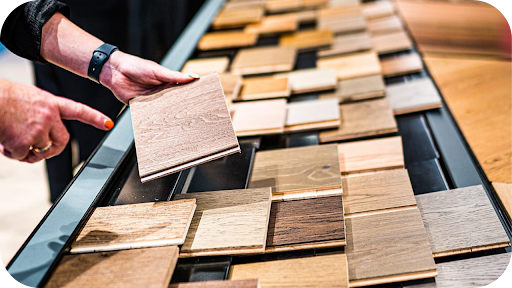Open-plan living has long been celebrated for its freedom, but without the right touches, it can feel more like a cavern than a canvas. That’s where joinery comes in, a clever way to bring warmth, structure, and personality into wide, flowing layouts.
From a bookshelf that quietly marks where the lounge ends, to a custom island that doubles as the family’s gathering point, joinery has the power to shape life at home without putting up walls. Think of it as design’s secret ingredient: part practical, part style statement.
In this article, we’ll share 15 creative ways to integrate joinery into open-plan layouts, showing you how to turn empty space into a home that feels both inviting and beautifully tailored.
1. Zone with Shelves That Seamlessly Divide
Open-plan living often benefits from a little definition, and shelves are one of the easiest ways to achieve it. A floor-to-ceiling bookshelf can guide the eye and gently mark where one zone ends and another begins.
Floating shelves can sit above low cabinetry and create a sense of rhythm without feeling heavy. When crafted through joinery, these shelves feel intentional, blending practicality with design.
You can use open sections for display and closed cupboards for storage, keeping a balance between beauty and order. The result is a space that feels connected, but not blurred, where every corner has its own quiet identity.
2. Built-In Joinery Seating That Doubles as Storage
Built-in seating is a clever way to add comfort while keeping clutter under control. A bench along the dining area wall, or a window seat tucked into a corner, gives people a spot to relax while the hidden storage underneath works hard.
It can hold anything from extra linens to children’s toys, helping open spaces stay tidy. Upholstered cushions add softness, while timber details tie the seat into the rest of the joinery.
The design feels seamless, part of the room rather than a separate piece of furniture. This approach is perfect for families who want openness without the constant mess.
3. Half-Walls or Pony Walls That Don’t Feel Heavy
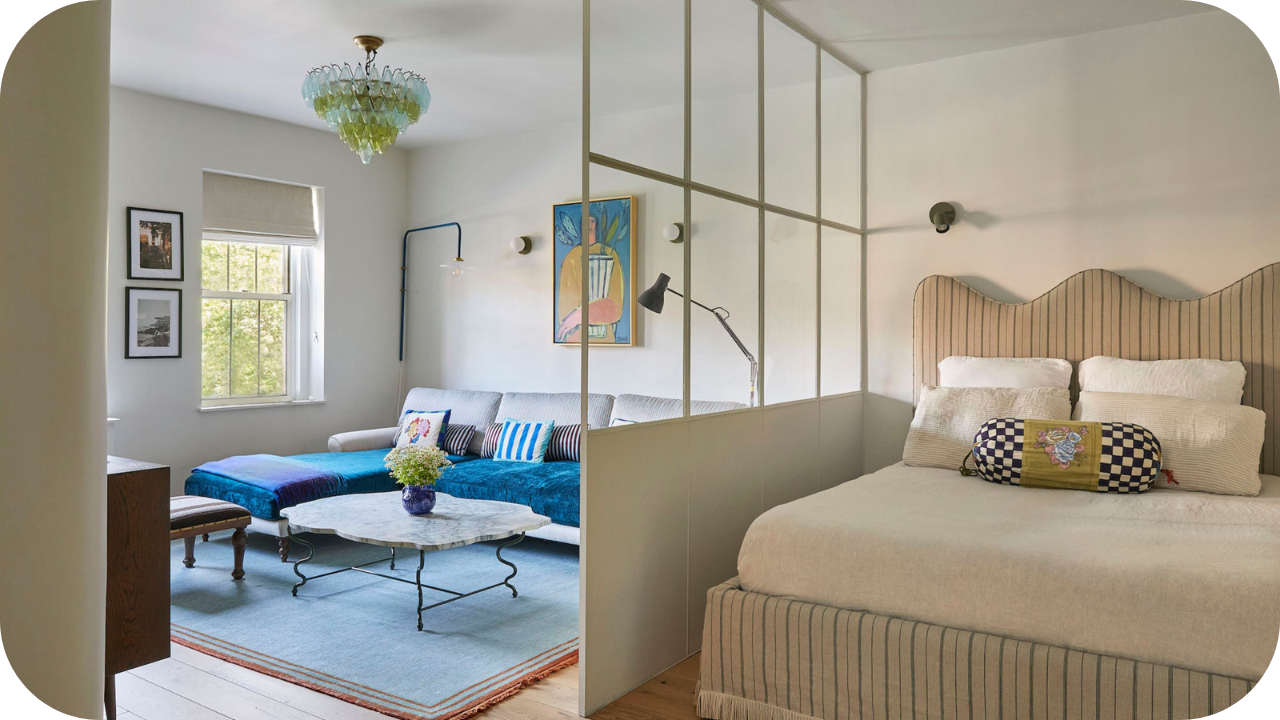
A half-wall creates separation without the weight of a full partition. It is perfect for dividing a kitchen and living space while still letting light travel through.
With joinery, the wall can be more than a divider. It might hold shelving, create a built-in bench, or provide a spot for plants or artwork. Matching materials to cabinetry keeps the design unified.
Half-walls work well when you need a subtle shift in function without breaking up the flow. They allow people to feel connected while still giving each area a clear purpose, proving that small structures can make a big impact.
4. Joinery Rugs That Define Without Walls
Rugs are one of the simplest tools for carving out zones in an open-plan space. A large rug under the sofa makes the lounge area feel anchored, while a different rug beneath the dining table signals a shift in activity.
The colours, textures, and patterns you choose help shape the mood of each zone. Pairing rugs with custom joinery ensures the design feels considered rather than random.
Rugs are also flexible; you can change them over time to refresh the look without altering the layout. It is a light-touch way of adding definition while keeping everything open and airy.
5. Shiplap or Panelling Joinery Transitions Instead of Walls
Shiplap or panelling brings texture and character to an open-plan design. Instead of adding a full wall, you can line a section of the dining area or a feature nook with vertical or horizontal boards.
The change in finish signals a shift in use without blocking the view. Painted boards feel fresh and coastal, while stained timber adds warmth and depth. When paired with joinery, panelling becomes part of a larger story, helping create subtle boundaries while tying zones together.
It is a simple, low-maintenance detail that adds personality and structure without interrupting the open feel of the home.
6. Glass or Crittall-Style Joinery Enclosures
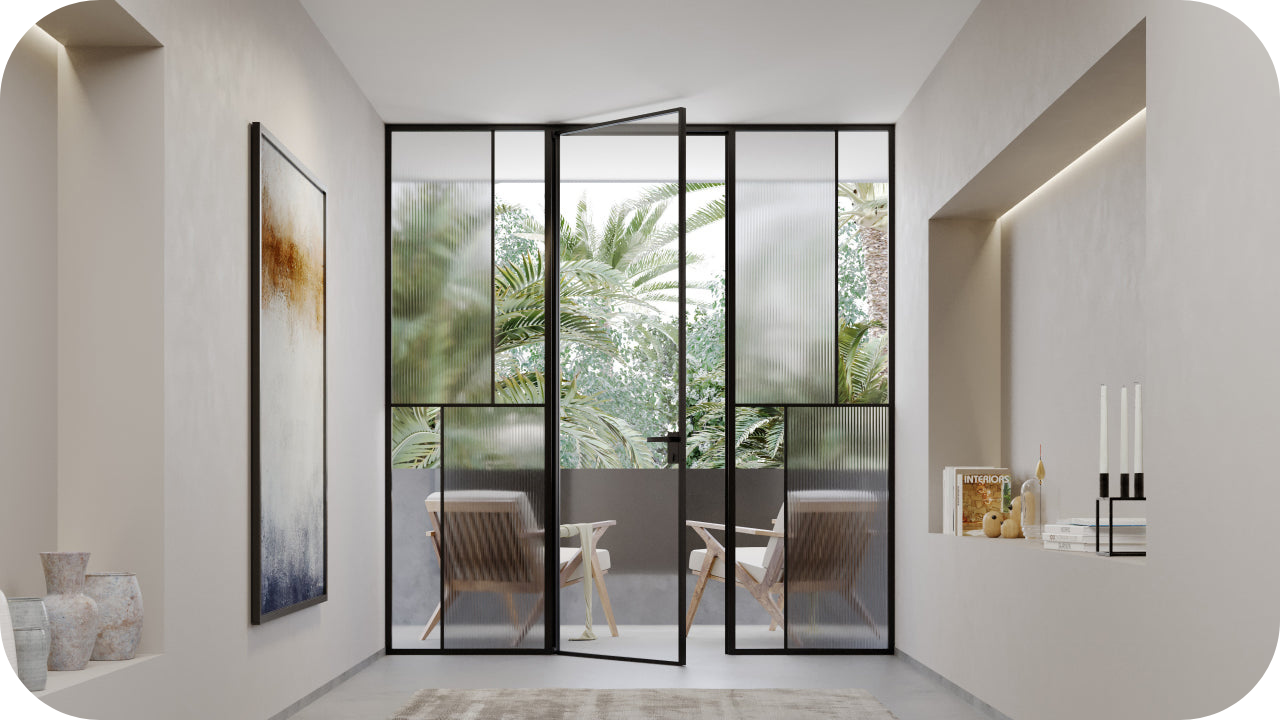
Glass partitions are a stylish way to divide a space without losing connection. Crittall-style designs, with slim steel or timber frames, add definition while still letting light flow freely.
These enclosures are useful when you need privacy, like for a study nook or a kitchen, but do not want to shut the room away. They also bring an architectural edge that feels modern and intentional.
By choosing custom joinery, the frames can be matched to the finishes of the wider space. The effect is crisp and elegant, providing separation that feels light, functional, and visually striking all at once.
7. Islands That Feel Sculptural
A kitchen island is often the heart of an open-plan layout. When crafted with care, it becomes more than just a work surface; it acts as a sculptural anchor. Curved edges, bold materials, or a waterfall countertop can make the island a statement piece.
At the same time, it naturally divides the kitchen from the living or dining area. Islands can also carry hidden storage, built-in appliances, or seating, keeping the space functional and social.
They invite people to gather while shaping the flow of movement around them. A well-designed island connects zones without the need for walls.
8. Colour-Blocked Joinery Cabinets as Spatial Clues
Colour is a powerful zoning tool, and joinery makes it easy to apply. By using different shades or finishes in cabinetry, you can gently mark out where one space ends and another begins. A darker tone in the kitchen paired with lighter storage in the lounge creates contrast without clutter.
The key is consistency in materials, so the whole design feels deliberate. Colour blocking works especially well in open layouts where walls are limited, as it helps guide the eye naturally.
It is a practical, design-led approach that brings clarity and personality while keeping the home cohesive and connected.
9. Built-In Joinery Office Nooks That Disappear
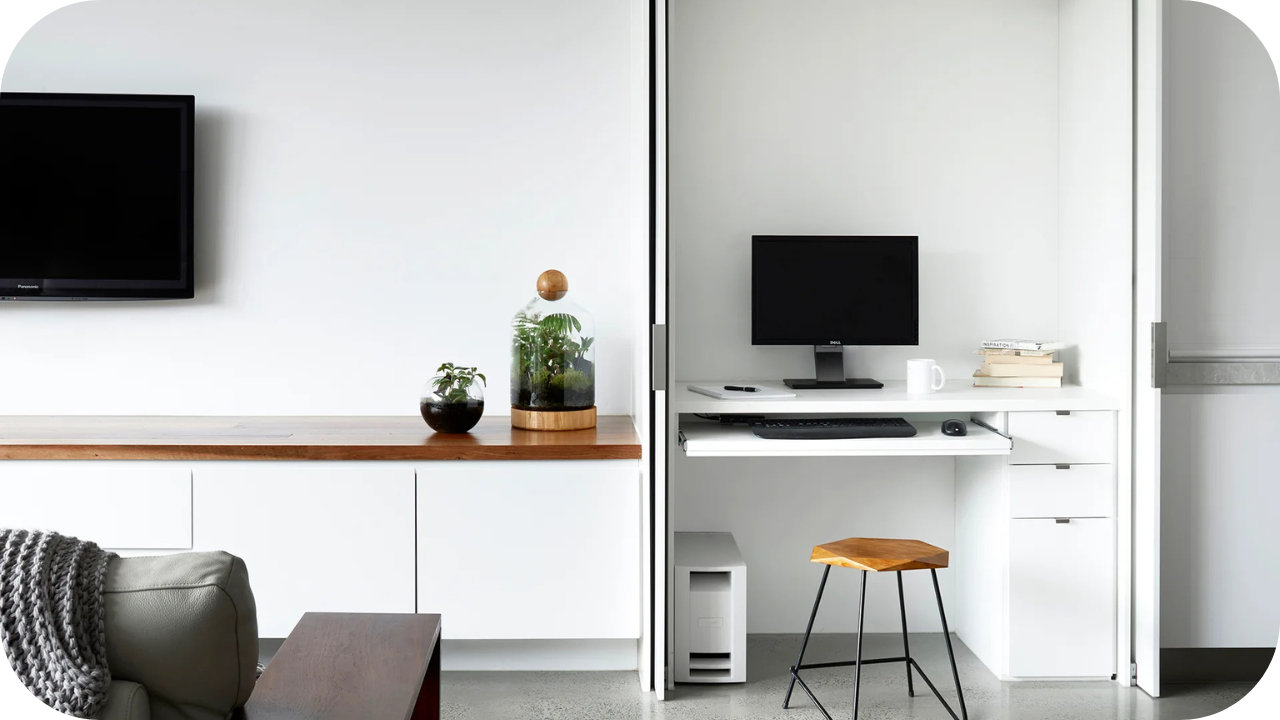
A built-in office nook is a lifesaver in open-plan living. It provides a dedicated place to work or study, but it doesn’t dominate the room. Joinery makes it possible to tuck a desk into cabinetry, hide equipment behind doors, or fold the whole setup away when not needed.
This keeps the space versatile, allowing the room to shift easily between family time and focus time. The finishes can be matched to the surrounding joinery, so the nook blends in rather than standing out.
It is a simple, clever solution that adds function without sacrificing the calm flow of an open-plan home.
10. Bay-Window Joinery Benches
A bay-window bench is both a feature and a gathering point. It frames the view, offers seating, and can even hide storage beneath. In open-plan layouts, these benches create a natural pause, defining a small zone within the larger flow.
They can serve as a casual dining spot, a reading corner, or simply a place to relax with family. Upholstery makes them soft and inviting, while timber joinery ties them into the wider design.
A bay-window bench adds charm and practicality in equal measure, proving that zoning doesn’t always require walls. Sometimes it just needs a thoughtful, welcoming seat.
11. Hidden Utility or Pantry Areas with Doors
Open-plan homes shine when clutter stays out of sight. Hidden pantries or utility spaces, disguised with bespoke joinery doors, keep everyday mess tucked away while the main area remains calm.
Sliding or pivoting panels allow easy access while blending seamlessly with cabinetry. This approach is especially helpful in kitchens, where appliances, food storage, or laundry equipment can be concealed.
The beauty lies in the discretion: when closed, the doors look like part of the overall design. By hiding the busy work behind neat finishes, you protect the openness of the space without giving up function or convenience.
12. Lighting Integrated into Joinery for Zone Designation
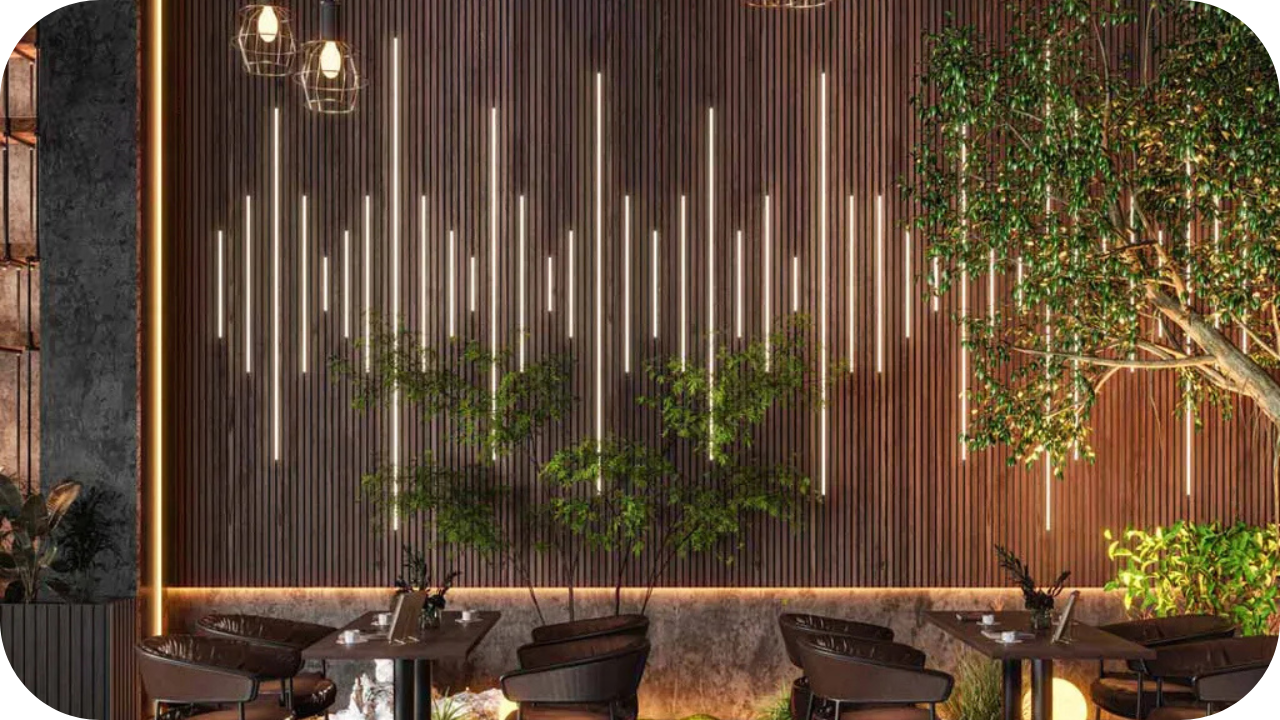
Lighting has the power to shape mood and guide flow, especially when built into joinery. LED strips under shelving, pendants above an island, or spotlights tucked into cabinetry can mark out different zones with ease.
A softly lit bookcase can frame the lounge, while brighter lights over the kitchen signal a shift in purpose. When integrated properly, the fixtures disappear into the design, leaving only their glow to define the space.
This creates a warm, layered atmosphere that is both practical and beautiful. Joinery and lighting together offer a subtle way to add structure without building physical walls.
13. Matching Joinery Across Zones for Cohesion
An open-plan layout works best when the zones feel connected. Matching joinery across areas is one of the easiest ways to create this link.
Using the same timber detail in both kitchen cabinetry and living room shelving, or repeating a stone benchtop finish, creates a natural thread. These echoes don’t have to be overwhelming. Small details, like handles or colours, are enough to tie the design together.
The effect is a home that feels harmonious and intentional. Each zone has its own purpose, but everything belongs to the same story, giving the open plan balance and flow.
14. Fold-Down Joinery Tables or Desk Surfaces
Fold-down surfaces are perfect for homes where space must work hard. A table mounted on the wall or a desk hidden inside cabinetry can be pulled out when needed and tucked away when not.
This keeps the open-plan layout clear and uncluttered. With custom joinery, these pieces blend seamlessly with surrounding finishes, so they look natural rather than added on. They are especially useful in small apartments or family homes where flexibility is essential.
By providing function only when required, fold-down designs let you enjoy openness while still having the tools you need for work, dining, or play.
15. Sculptural Stair or Nook Feature Joinery
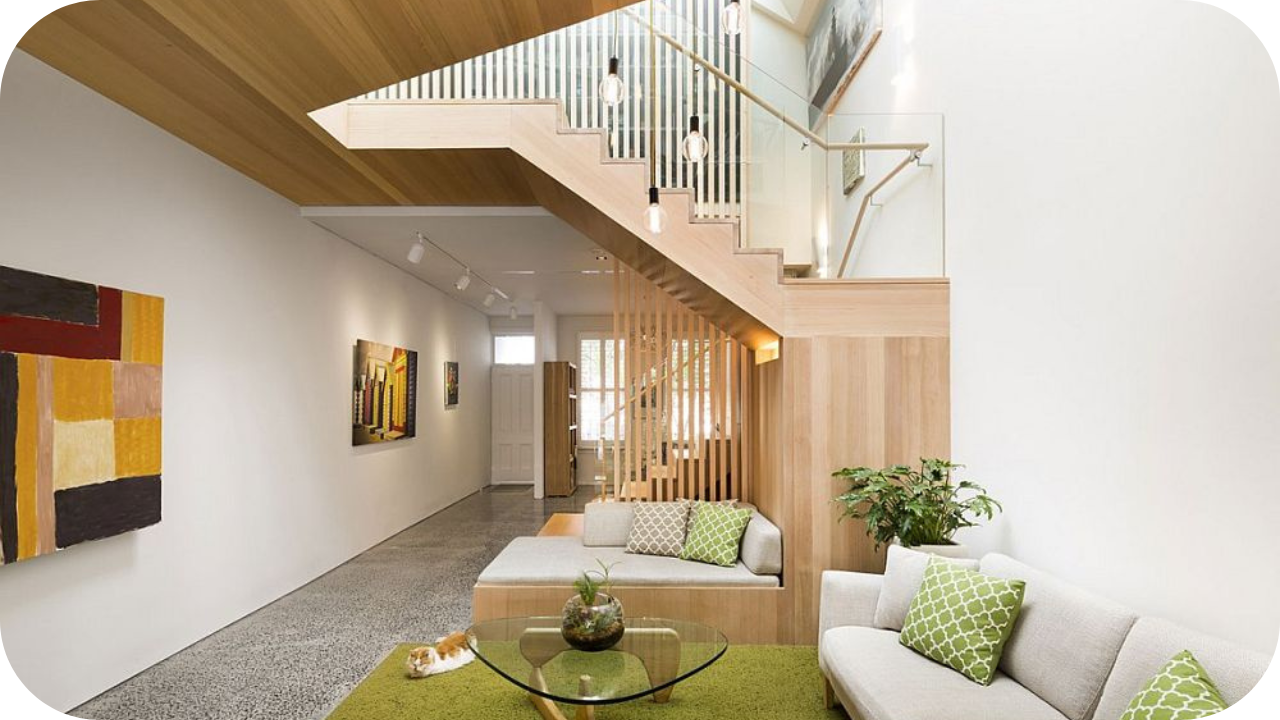
Stairs and nooks can easily become forgotten spaces, but joinery transforms them into features. Built-in storage under stairs keeps belongings out of sight, while a reading nook adds charm and purpose.
These areas can also showcase shelving, artwork, or even wine racks. When designed with care, they act as sculptural elements, drawing the eye and adding character to the home.
Materials and finishes chosen to match the wider scheme make the feature feel intentional. Instead of wasted corners, you gain functional design that also defines zones. It is proof that every part of an open-plan home can have a role.
What Romaac Joinery Brings to the Table
Here is where Romaac Joinery stands out from the crowd, offering more than just cabinetry. Their work speaks to people who value precision, individuality, and spaces that feel crafted with care:
- Bespoke Solutions for Every Client: Romaac delivers more than standard fittings, offering tailored kitchens, retail fit-outs, and residential cabinetry that reflect each client’s lifestyle and brand identity.
- Craftsmanship with a Modern Edge: Every piece combines traditional joinery skill with contemporary design thinking, creating work that is both timeless and stylish.
- A Transparent, Trustworthy Process: From estimation to installation, Romaac ensures clear communication, reliable timelines, and results that match the client’s vision.
- Joinery That Marries Beauty and Function: Practical needs meet design elegance with features like hidden storage, statement islands, and everyday usability built into every project.
- Tailored Design for Unique Briefs: Romaac approaches each project as a new opportunity, crafting joinery that seamlessly integrates with the home or business environment.
- Built with Premium Materials: Quality is guaranteed through the careful selection of materials that are durable, refined, and built to age gracefully.
- A Collaborative Partnership: Clients are included at every step, ensuring their ideas are shaped into results that go beyond expectations.
- Versatility Across Sectors: With experience in boutique homes and large-scale commercial projects, Romaac adapts to different scales, complexities, and design goals.
- A Reputation You Can Rely On: Known for reliability, Romaac consistently delivers on time, within scope, and at the highest standard of quality.
Joinery That Shapes the Way You Live
Open-plan spaces shine when they feel connected yet defined, and joinery is the tool that makes this balance possible. With thoughtful details like shelving, islands, or hidden nooks, a home can shift from plain and sprawling to purposeful and full of character.
Without these touches, open layouts often risk feeling unfinished, leaving daily life less practical and less inspiring. The difference comes down to design that works as hard as it looks. At Romaac Joinery, every project is tailored to transform empty square metres into spaces that truly serve the people who live and work in them.
Ready to create a home that feels functional, stylish, and uniquely yours? Contact Romaac Joinery today and let our expert team bring your open-plan vision to life.
Easy steps to create a color palette
Lorem ipsum dolor sit amet, consectetur adipiscing elit lobortis arcu enim urna adipiscing praesent velit viverra sit semper lorem eu cursus vel hendrerit elementum morbi curabitur etiam nibh justo, lorem aliquet donec sed sit mi dignissim at ante massa mattis.
- Neque sodales ut etiam sit amet nisl purus non tellus orci ac auctor
- Adipiscing elit ut aliquam purus sit amet viverra suspendisse potent
- Mauris commodo quis imperdiet massa tincidunt nunc pulvinar
- Excepteur sint occaecat cupidatat non proident sunt in culpa qui officia
What is a color palette?
Vitae congue eu consequat ac felis placerat vestibulum lectus mauris ultrices cursus sit amet dictum sit amet justo donec enim diam porttitor lacus luctus accumsan tortor posuere praesent tristique magna sit amet purus gravida quis blandit turpis.

Don’t overspend on growth marketing without good retention rates
At risus viverra adipiscing at in tellus integer feugiat nisl pretium fusce id velit ut tortor sagittis orci a scelerisque purus semper eget at lectus urna duis convallis porta nibh venenatis cras sed felis eget neque laoreet suspendisse interdum consectetur libero id faucibus nisl donec pretium vulputate sapien nec sagittis aliquam nunc lobortis mattis aliquam faucibus purus in.
- Neque sodales ut etiam sit amet nisl purus non tellus orci ac auctor
- Adipiscing elit ut aliquam purus sit amet viverra suspendisse potenti
- Mauris commodo quis imperdiet massa tincidunt nunc pulvinar
- Adipiscing elit ut aliquam purus sit amet viverra suspendisse potenti
What’s the ideal customer retention rate?
Nisi quis eleifend quam adipiscing vitae aliquet bibendum enim facilisis gravida neque euismod in pellentesque massa placerat volutpat lacus laoreet non curabitur gravida odio aenean sed adipiscing diam donec adipiscing tristique risus amet est placerat in egestas erat.
“Lorem ipsum dolor sit amet consectetur adipiscing elit, sed do eiusmod tempor incididunt ut labore et dolore magna aliqua enim ad minim veniam.”
Next steps to increase your customer retention
Eget lorem dolor sed viverra ipsum nunc aliquet bibendum felis donec et odio pellentesque diam volutpat commodo sed egestas aliquam sem fringilla ut morbi tincidunt augue interdum velit euismod eu tincidunt tortor aliquam nulla facilisi aenean sed adipiscing diam donec adipiscing ut lectus arcu bibendum at varius vel pharetra nibh venenatis cras sed felis eget.



